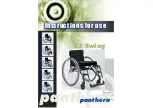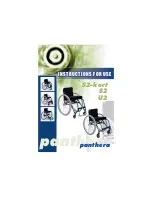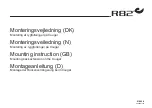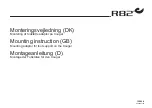
Anterior pelvic tilt
ASSESSMENT
Uncorrected posture
corrected posture – a 4-point belt
Posterior pelvic tilt
Uncorrected posture
corrected posture - a two-point belt
Most common posture deformations caused by improper position of the pelvis
reduced or reversed thoracic kyphosis,
ASIS (anterior superior iliac spine) lower than PISI
(posterior superior iliac spine),
increased lumbar lordosis,
hyperextended trunk,
retracted shoulder blades.
CAUSES
Wheelchair: seat to backrest angle too small.
Physical conditions: tight hip flexor, weak abdomen
muscles, and lordosis.
HOW TO USE THE BELT
Position the belt above the ASIS and attach at 30–45
to the back. Anchor the secondary strap at 60° to 90°
to the seat to prevent the belt from lifting up into the
abdomen.
WHY TO USE THE BELT
The belt is designed to prevent the pelvis from tilting
forward.
ASSESSMENT
sitting on the sacral bone – most common case,
ASIS (an anterior superior iliac spine) higher than PISI (a
posterior superior iliac spine),
a tendency to slide out of wheelchair,
extended lumbar spine,
thoracic kyphosis,
protracted shoulder blades,
C-shaped posture.
CAUSES
Wheelchair: seat too deep, backrest too short, footplate too
low or too far forward.
Physical conditions: contractures, weak muscles, kyphosis.
HOW TO USE THE BELT
Position the belt anterior and inferior to the ASIS and attach
at 90° to the seat.
WHY TO USE THE BELT
The belt is designed to prevent sliding.
Belt made from high quality flexible neoprene
padded with a pleasant to the touch and easy
to clean jersey fabric. Provides great comfort
and minimizes pressure thrust.
Clip buckle, easy to use
and effectively
prevents self-opening.
A strap adjusting the pull, enables quick and easy
adjustment of the belt to fit the user. Separately each side.
a 4-point hip and thigh belt
a 2-point hip and thigh belt
























